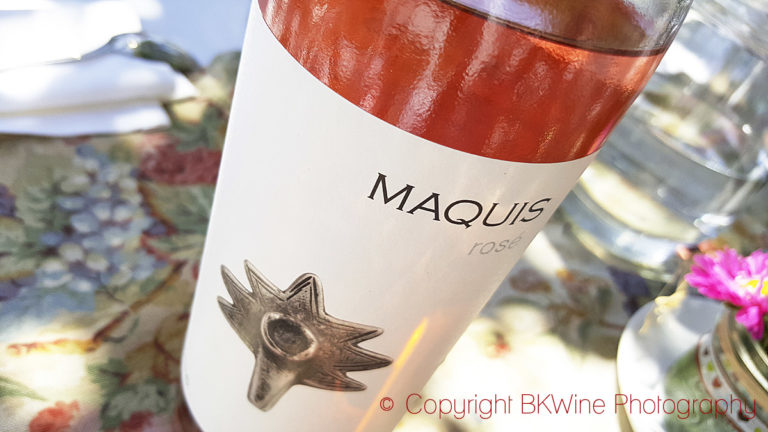After working as an oenologist at the well-known winery Bellavista in Franciacorta, Mattia Vezzola today dedicates his time to his own wines, especially barrel-aged rosé wines, on the family estate Costaripa. This year, he also celebrates the fiftieth anniversary of his first sparkling wine made using the classic method.
Valtenési is a wine district in Lombardy on the western shore of Lake Garda. If you take one of the boats down by the quay and go over to the other side of the lake, you end up in Bardolino or Valpolicella. Valténesi is a small area with about sixty farms that all focus on rosé wines made from groppello, sangiovese, marzemino and barbera. But Mattia Vezzola’s wines are like no other. We’ll get to that in a moment.
“Groppello has thin skin, is delicate and resembles pinot noir. It produces juicy wines with a lot of pepperiness. You know Sangiovese, and marzemino and barbera give more colour if needed,” says Mattia Vezzola.
A long tradition with rosé
He worked for a long time at Bellavista in Franciacorta, the area slightly further west where sparkling wines are made using the classic method from pinot noir and chardonnay. For fifteen years now, Vezzola has built up the family farm Costaripa, where he works with his children Gherardo and Nicole.
“There is a long tradition in Valtenesi of making rosé wines. The first bottle was made at the end of the 19th century,” says Mattia and shakes his head when I ask if the first bottle of rosé in Italy wasn’t Five Roses from Apulia. (I checked, and the official version is that Five Roses from Leone de Castris in Apulia is described as the first rosé wine in Italy to be bottled. The year was 1943.)
Fruit sweetness rather than sugar sweetness
Even though we are in northern Italy, the climate is mild and pleasant all year round, thanks to the influence of Lake Garda. Otherwise, the beautiful lemon and olive trees would not survive this far north.
“Thanks to the climate, our grapes ripen perfectly while retaining a high level of acidity. We make wines where the sweetness comes from the ripe fruit and not from residual sugar. Another important point is that we grow our grapes specifically to make rosé wine. In most cases, pink wines are a by-product, but not with us,” says Mattia Vezzola.
His wines have a pH of around 3.1 (which is low for a wine; in other words, it has high acidity), and he never allows residual sugar to exceed 4 grams per litre in the sparkling wines.
“Sweetness comes from the ripe fruit character. We have to keep our identity and make wines that reflect our soil and climate,” he says.
The grapes are picked by hand and then pressed directly and carefully. “For the rosé wines, we have skin contact between thirty minutes and four hours, depending on the wine,” says Mattia. “I determine the colour by looking at it, it is light, but it varies a little from year to year. That’s how it is when you work in a traditional way,” he says.
Winemaking for long-lasting rosé
The must is then placed in a steel tank where the wine is micro-oxidized. This means adding oxygen through small tubes. Mattia believes that by exposing the must to oxygen, the colour and aromas stabilize faster, and the wine gets a stronger structure. With the help of the oxygen, larger molecules of phenols are also formed, which then fall to the bottom. Therefore, you do not need to use, for example, bentonite to clarify the wine.
Mattia also says that he avoids adding sulfur during winemaking. “But it’s risky because it’s like doing a triple volt without a safety net, too much oxygen, and the wine oxidizes. There is also a greater risk of bad bacteria taking over and spoiling the wine. We think it’s worth the risk because the wines last longer, and we don’t need to use sulfur as protection. We want to make rosé wines that can be aged and that you don’t have to drink within a couple of months if you don’t want to,” says Mattia.
Costaripa’s rosé wines are different from most rosé wines you come across in the trade. Mattia Vezzola focuses on complexity, and several of his wines are fermented and stored in barrels. “We use really old barrels, so they don’t affect the wine too much. Every year we send about twenty barrels to Cognac for repair. It costs 300 euros, almost as much as buying a new barrel, but this is our philosophy,” he says.
Different rosé wine
Molmento Valtenesi 2018 is a very special rosé wine. It is made with groppello and smaller portions of sangiovese, marzemino and barbera. It is made from a single vineyard on a small scale. After a skin contact of four hours, it ferments and ages for two years in barrels and then three years in bottles. It has a light salmon colour and complex aromas: candied orange peel, pomegranate, rose petals and white pepper. It has high acidity and a bit of astringency with nice length and intensity. A very different but excellent rosé wine.
“I drank Viña Tondonia’s rosé wine from Rioja, which is aged in barrels and can be drunk after ten years. I thought that it should work with us too,” says Mattia.
RosaMaria Valténesi is a slightly simpler version but still more complex than what you would expect from most rosé wines. It is also made from groppello and marzemino with a smaller amount of barbera and sangiovese. Fifty per cent of the wine has been fermented and aged in barrels for six months. It is bright pink thanks to a short skin contact of only thirty minutes. It is juicy, with grapefruit, pomegranate and has spicy notes. The sweetness of the ripe fruit is offset by saltiness and a tickling acidity. It is broad, juicy but without feeling heavy.
“We’ve always made light-coloured rosé wines here in Valténesi, so unlike other regions, we haven’t jumped on the Provence trend in recent years,” says Mattia.
According to Mattia Vezzola, France will continue to be the leader in the rosé market. “Unlike us Italians, France can handle growth. There is more control and study to manage the market. Here in Italy, everyone does what they want, and it often becomes chaos,” he says.
Sparkling Mattia Vezzola
Costaripa also makes delicious sparkling wines using the classic method. The one called Mattia Vezzola Brut Rosé is made from chardonnay and a small percentage of pinot noir. It is light pink, elegantly creamy, medium-bodied with ripe berries and a nicely preserved acidity. Plenty of flavours, elegant and delicious.
Mattia Vezzola Grande Annata 2014 is also made from 80 per cent chardonnay and 20 per cent pinot noir. Here, 50 per cent of the base wine is kept in barrels, the second fermentation takes place in bottles, and the wine is left on the lees for 60 months. The wine is salmon coloured with a complex and nuanced aroma and taste of white peach, strawberries and crushed berries, croissant and roasted hazelnuts. The wine has a ripe and full-bodied appearance that is lifted thanks to a rippling and finely preserved acidity. A wine for those who enjoy fuller sparkling wines that are not bone dry.
There is no doubt that Mattia Vezzola knows his stuff. The challenge is to present age-worthy wines in a segment where most rosé wines are simpler varieties made to be consumed the same year they hit the market. At the same time, these are wines that stand out in the crowd. It can certainly please a niche audience and many sommeliers who can surprise guests with these well-made wines.












